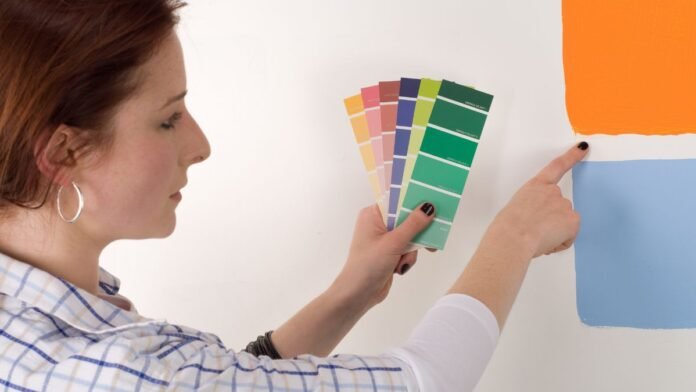How to design a home color scheme? The colors that we choose to incorporate into the design and decor of our homes can have a significant impact on how we feel in those spaces.
Colors can evoke certain emotions and moods and can even influence our behavior. It is important to carefully consider the colors that we use in our homes and to choose ones that will create a relaxing and inviting atmosphere.
Before we delve into the different colors that can be used in home design, it is important to note that color psychology is not an exact science.
There are many factors that can influence how a person perceives a certain color, including their cultural background, personal experiences, and even their mood.
While certain colors are considered to evoke certain emotions and moods, it is ultimately up to each individual to determine what colors make them feel most comfortable and relaxed in their own home.
What are the different home design styles in terms of color? That being said, let’s explore the different colors that can be used in home design, and how to choose colors that will complement each other.
Neutral Colors
Neutral colors are perhaps the most popular choice for home design, as they are versatile and can create a calming and elegant atmosphere. Neutral colors include shades of white, beige, gray, and taupe.
These colors can be used as a base for a room, and then accented with pops of brighter colors, patterns, or textures. Neutral colors can also create a sense of continuity throughout a home, as we can use them in multiple rooms without clashing with other colors.
One important consideration when using neutral colors is to choose shades that have the right undertones. For example, if you want to use a warm beige as a base color in your living room, pair it with warm colors like red or orange, rather than cool colors like blue or green.
Similarly, if you want to use a cool gray as a base color, pair it with cool colors like blue or green, rather than warm colors like yellow or red.
Warm Colors
Warm colors include shades of red, orange, and yellow, and can create a cozy and inviting atmosphere in a room.
We can use these colors as accents in a neutral room, or we can use them as a base color for a room that you want to feel warm and welcoming. Warm colors can also create a sense of energy and excitement in a space and are often used in social areas like kitchen and dining rooms.
When using warm colors, it is important to be mindful of their intensity. Bright or bold shades of red, orange, or yellow can be overwhelming if used in a large amount, and can even create a sense of anxiety or restlessness in some people.
Instead, consider using muted or earthy shades of these colors, or use them sparingly as accents in a neutral room.
Cool Colors
Cool colors include shades of blue, green, and purple, and can create a calming and serene atmosphere in a room.
We often use these colors in bedrooms and bathrooms, where relaxation is key. Cool colors can also create a sense of sophistication and elegance and are often used in formal spaces like living and dining rooms.
When using cool colors, it is important to note that they can sometimes feel cold or uninviting if used in a large amount.
To counteract this effect, consider pairing cool colors with warmer accents like wood or brass, or adding texture and pattern to the room to create visual interest.
Choosing Colors that Complement Each Other
How to choose a home color palette? When choosing colors for your home, it is important to consider how they will work together as a cohesive palette. One popular method for selecting colors is to use a color wheel, which shows how different colors relate to each other.
Complementary colors are opposite each other on the color wheel and can create a sense of balance and harmony when used together. Analogous colors are next to each other on the color wheel and can create a sense of continuity and flow in a room.
Another method for selecting colors is to choose a “hero” color, which is the dominant color in a room, and then pair it with two or three supporting colors.
These supporting colors can be complementary or analogous to the hero color and can be used in varying shades and intensities throughout the room.
Creating a Relaxing and Inviting Atmosphere
Ultimately, the goal of using color in home design is to create a space that feels comfortable, inviting, and true to your personal style.
To achieve this, it is important to consider each element of the room, from the walls and floors to the furniture and accessories, when selecting colors.
And while there are general guidelines for using color in home design, it ultimately comes down to what feels right for you and your home.
Why is Color Important in Interior Design?
In conclusion, the colors that we choose to incorporate into our homes can have a significant impact on our mood and behavior.
Choosing colors that create a relaxing and inviting atmosphere can make our homes feel like a sanctuary where we can truly unwind and be ourselves.
By carefully considering the colors that we use in our home design and decor, we can create a space that is both visually pleasing and emotionally fulfilling.




